Si Ma Cai District in Lào Cai is often called the twin sister of Sa Pa. While Sa Pa is a well known tourism destination, its sister Si Ma Cai is a hidden beauty that still retains its serenity and originality.
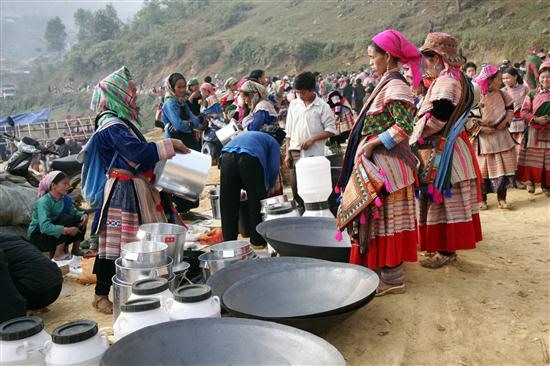
Check it out: Visiting a local market is a great way to explore the culture of Si Ma Cai. — VNA/VNS Photo Nguyễn Anh Tuấn
Si Ma Cai District sits in the northeastern Lào Cai Province. It is about 95km from Lào Cai City, at the elevation of 1,600 metres above sea level.
From Lào Cai City, one can take the bus to Si Ma Cai town. The curving road stretching from the city centre to Si Ma Cai is 95km. At some points it is quite steep.
Arriving at Si Ma Cai, visitors can indulge in the pure nature, the mountains and thick forest as well as the fresh atmosphere. They can enjoy the beauty of the pink tam giác mạch (buckwheat) flowers, mingle in the local market space and enjoy the local specialties.
The area is surrounded by grand limestone mountain ranges. It is no longer a remote locality as there is a concrete road connecting the district with the neighbouring ones.
From the Bắc Hà plateau, one drives about 10km to get to Lử Thần Commune, where the pink buckwheat flower blooms on the hillsides in September.
The blend of the green forest and pink violet flowers makes the area look like a painting.
Si Ma Cai is also decorated with golden terraced rice fields in Sín Chéng commune, the grey rock garden in Sán Chải Commune or the sea of clouds floating in mountains in Thào Chư Phìn. The commune is also home to seemingly endless sa mộc (evergreen coniferous trees) forest.
A boat tour around the Chảy river in Bản Mế Commune lets you contemplate the tranquil riverscape and valleys.
Along with spectacular nature, Si Ma Cai also attracts visitors for its diverse culture formed by different ethnic minorities: Thu Lao, Mông, Tày, Nùng. Each has their own costumes, cuisine and architecture.
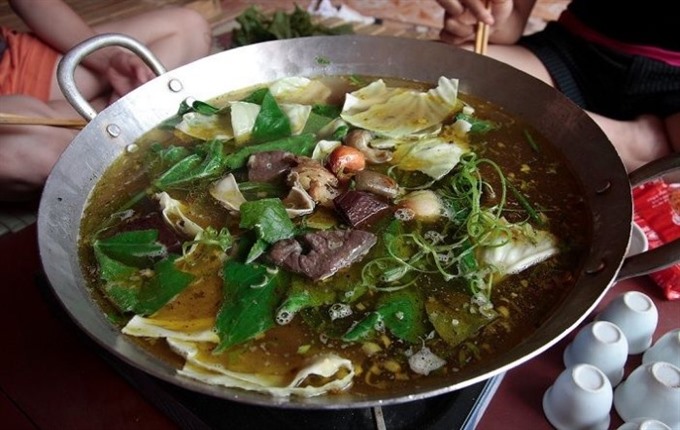
Giddyup: Thắng cố (a dish made from horse meat and its organs) is a specialty dish of the mountainous area.
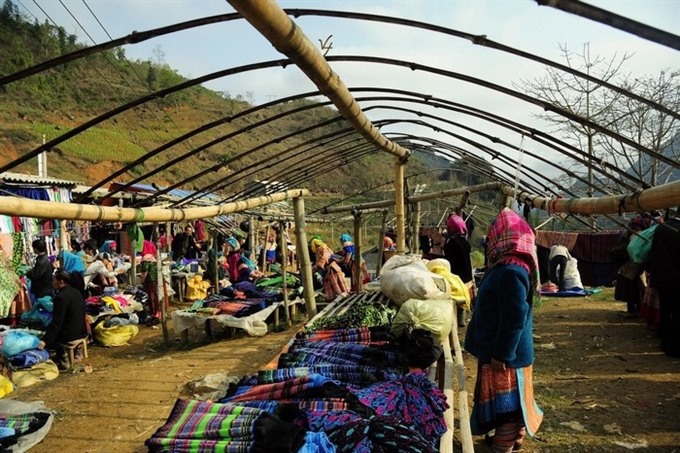
Buy it: A corner selling colourful traditional costumes of the local ethnic people in Cán Cấu Market.
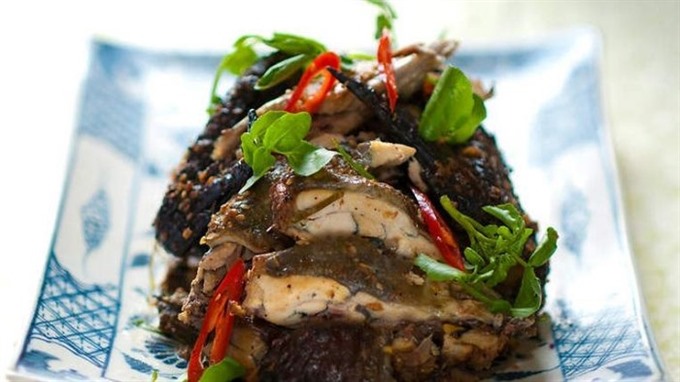
Tasty: Black chicken grilled with honey attracts visitors to Si Ma Cai.
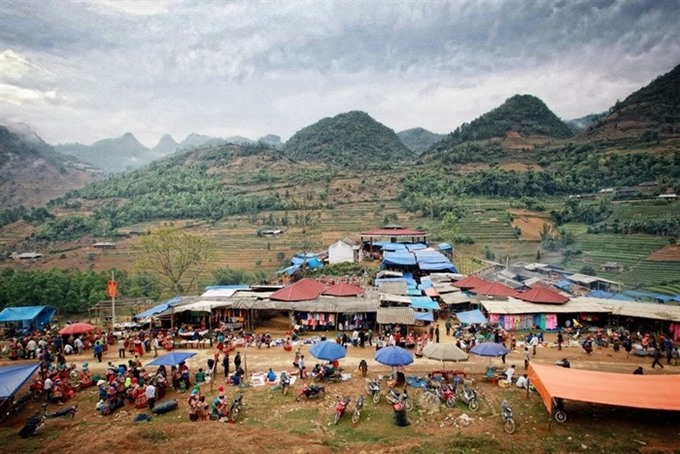
Four-legged creatures: Cán Cấu Market opens every Saturday and is considered one of the biggest horse and buffalo markets in the north. — Photos mytour.vn

Remote: Arriving at Si Ma Cai, visitors can indulge in the pure nature, the mountains and thick forest as well as enjoy the local specialties.
There are a number of options for one to explore the local life and ethnic culture, including the spring festivals and the markets of the Mông, Thu Lao and Nùng ethnic groups.
The Sín Chéng market takes place every Wednesday with the colourful booths displaying traditional costumes of the Mông ethnic people.
There are several local markets worth visiting in Lào Cai: including Bắc Ly, Bản Phiệt and Cốc Ly. The best one is said to be Cán Cấu market, about ten kilometres from Bắc Hà. The market opens every Saturday and on special occasions in the year.
When the foggy dew still lingers in the trees, local ethnic people with baskets on their backs head to the market, some leading their buffalo or horse, some carrying a few chickens. Locals in the neighouring districts also gather for trading as this is known as one of the biggest horse and buffalo markets. Men buy horses and buffalo; kids snack in the eateries and women mostly gather in the clothes-selling areas.
The market is separated into different areas: cattle, garments and food. Some Mông ethnic people wearing bright colourful clothes make the area look like a flower market.
Specialty dishes of the region include maize wine, thắng cố (a dish made from horse meat and its organs), mountain pork, black chicken and Sín Chéng duck. The Quan Thân Sán Mountain range at the height of 2,800 metres also impresses visitors along with the friendly smiles of locals.
Nguyễn Văn Bách, first-time visitor to Si Ma Cai, said, “I am very impressed with the serenity of the landscape as well as the communal ambiance of the local market. The local people are also very friendly and helpful. Yet a negative here is the poor infrastructure. There are not many accommodations and the eateries are not diverse. There is no hostel or hotel available, so I don’t stay here at night but come to Bắc Hà and return Si Ma Cai the day after.”
Giàng Sín Chớ, deputy chairman of Si Ma Cai District People’s Committee, said, “Tapping the tourism potential is a priority of the locality as well as local people. The district has implemented solutions to push tourism development but they haven’t yet yielded big revenue.”
Currently, Si Ma Cai District welcomes about 15,000 visitors a month. — VNS